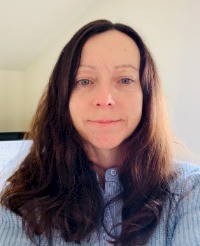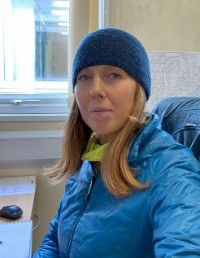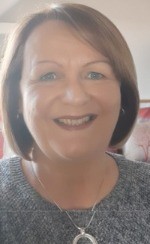By Julie Graham
When I left school at 16 in 1978 all that was expected of me was to get a job – any job. No one in my family had been to college or university and with my disjointed education there was little expectation that I would either. That was a journey I didn’t take until I was well into my thirties. But I attended my careers advice appointment full of anticipation, wondering what great opportunities lay ahead of me. Despite the introduction of the Sex Discrimination Act in 1975, I was presented with only three career path options: clerical work, nursing or an air hostess! I left the office very deflated. This thankfully is not the case for young people in the UK today whose career paths are limited only by their imaginations.

So, what about women and wind farms? Well this is where it gets interesting because when speaking to the project team building Viking Wind farm you see women embedded into every aspect of the build.
Angela
|
The stories of how these women ended up in the industry are as varied as they are themselves. There are single women, women with children working away from home, women with partners who also work on this project, women who planned to work in construction and others where serendipity got them here. But if there is one thread that binds them all, that is the passion they have for what they do and the challenges they have faced over the years in what has often been a difficult environment. Happily, they wouldn’t change a thing or can imagine doing anything else.
It is obvious that huge changes have taken place. We all take for granted that our basic needs will be met at work, but the industry has been slow to accommodate the needs of women – PPE that actually fits and ladies’ toilets to name just a couple. But the ability to be able to say, “I helped design that”, “I helped built that”, “I was part of that” and to see projects through from start to finish has been a driving factor for many of the women on the Viking site. Added to this is their commitment to green energies and carbon net zero targets as they embrace the significant part they play in the global picture.
Julie
I am employed as Lead Technical Advisor on the Viking Wind Farm project which is a varied and interesting role. My primary role is to validate the construction of the Tony Gee-designed elements, answer any technical queries from the contractor and raise requests for information/defects and omission notices as needed. I have been involved in supervising the construction of the new Sandwater road and, with this almost complete, I will be moving onto my next role. This is to oversee the findings from the ground investigation for the wind turbine generating bases, and sign off on the wind turbine generating bases, foundation quality control system documentation. I spend a lot of time out on site, maintaining a photographic record of the key construction phases and reporting on progress. I also provide SSE with any support or advice they may need during construction to aid the successful delivery of the project, particularly in relation to geotechnical issues and have responsibilities in relation to health, safety and the environment. |
The women working on Viking all have a real interest in Shetland too and enjoy walking the hills to take in the amazing landscape and visiting places off the beaten track> speaking with them, I have been encouraged to do more of this myself. They are as immersed in life in Shetland as much as they are in the project.
As they share their stories it is apparent that working on wind farms has been a positive experience and Viking is proving to be just the same. To be honest their gender doesn’t matter when it comes to what they do on a day-to-day basis. They are professionals who are using skills gained over many years while also developing new ones to address the challenges that on-the-ground conditions in Shetland can bring. I’ve heard how there have been significant changes to the expectations of those working on construction sites over the years. While it used to be long hours and little flexibility, colleagues still have relatively long hours but with a definite move to allowing for a better work life balance, which I think everyone would agree is necessary for our wellbeing. The confidence women need to enter this industry can’t be underestimated but the rewards are obviously there. Companies like SSE, RJ McLeod and Tony Gee are great examples of how the playing field is evening out and it is about having the right person for the job, regardless of gender.
Ann
|
So, are these women still viewed as working in a man’s world or is the industry now everyone’s world? Undeniably, females make up far less of the workforce than males. But there are certainly far more women taking up posts in all areas of building wind farms. They are now visible and the message is getting out that this is a valuable and satisfying career path for women to access. To ensure this continues I feel the way forward is for us to connect with young people and inspire them with our passion and enthusiasm - supporting them to embrace opportunities and believe that anything is possible.


